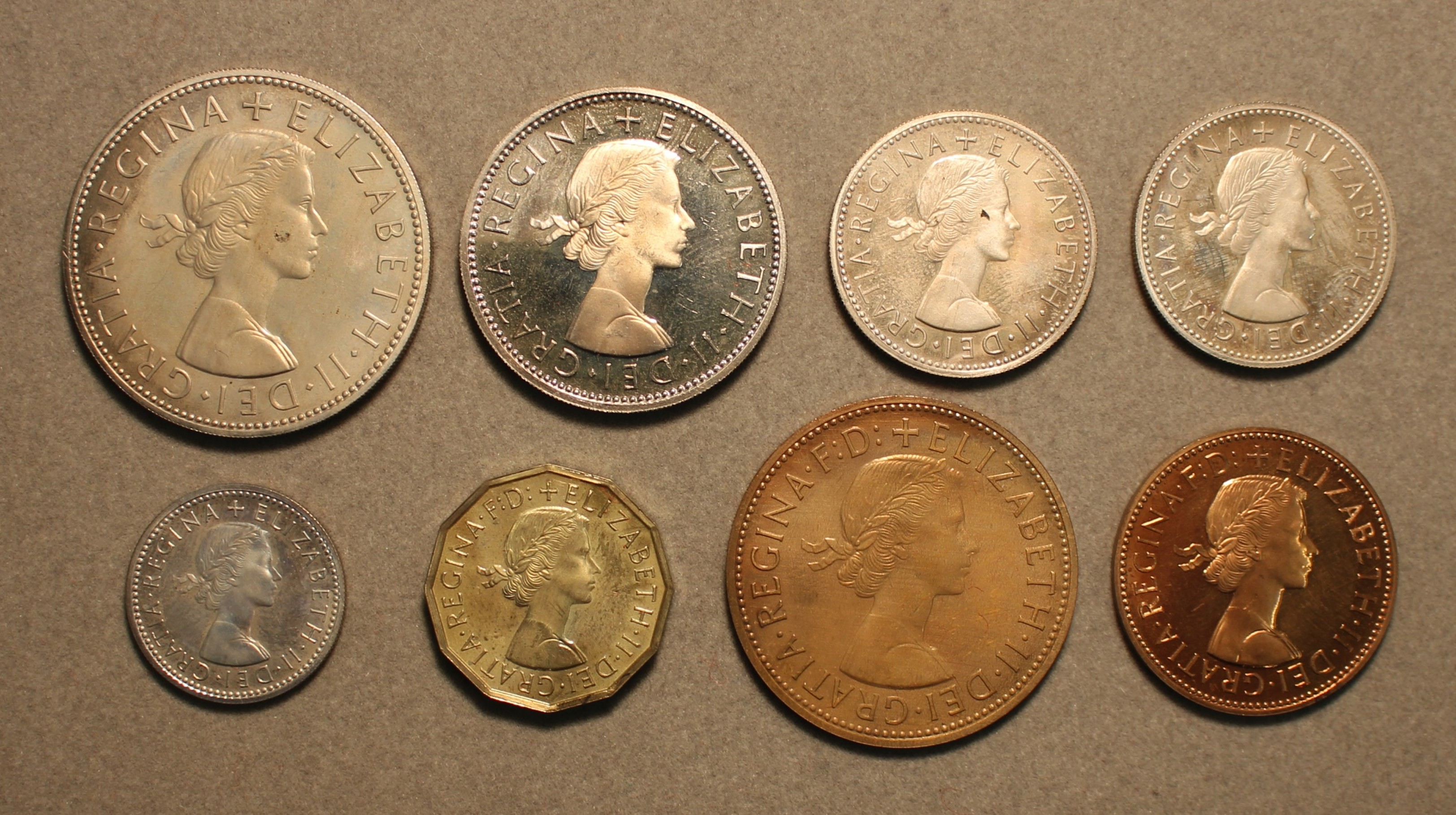Cameron Maclean talks us through some of the rarest British coins in The Hunterian’s numismatic collection.
Did you know that during her seventy-year reign, over one hundred billion coins were minted in the name of Elizabeth II (r.1952-2022)?
The Hunterian’s numismatic collection contains some of the rarest British coins of Elizabeth II. We’ll look at a few of them in this post.
They are ‘proof-record’ sets of Elizabeth II’s pre-decimal coinage, which were minted from 1953 to 1970.


Proof-record coins
Prior to 1971, the UK had a pre-decimal currency. The pound was made up of twenty shillings. Each shilling contained twelve pence, making a total of 240 pence in the pound. In 1971, this pre-decimal system was replaced with the decimal coinage that we use today.
As the name suggests, proof-record coins are of proof quality. Proof coins are manufactured to a higher standard than coins that are intended for regular usage in circulation.
They are produced using polished coining dies and specially prepared blanks. As a result, proof coins display a sharper finish. They often have mirror-like fields (the blank area surrounding the design and inscription).
The photos above show a regular 1962 dated halfcrown alongside a proof version. The superior quality of the proof is evident.

While the Royal Mint continues to consistently issue proof sets in large quantities for sale to the public, this practice only began after decimalisation.
Prior to this, the only publicly available proof sets of Elizabeth II were minted in 1953 (to celebrate the coronation) and 1970 (to commemorate the last pre-decimal coins).
Acquiring the proof-record coins
In contrast, proof-record coins were produced in tiny amounts and not released to the public. They were retained for the Royal Mint’s own collection and distributed to the Royal Collection, dignitaries, other mints and museums. This is how The Hunterian acquired its sets.
Each set contains a proof coin of every circulating denomination from a particular year. The above 1962 dated set is composed of a halfcrown (two shillings and sixpence), florin (two shillings), a shilling with the three lions of England on its reverse, another shilling with the Scottish rampant lion on its reverse, sixpence, threepence, penny and halfpenny.
The 1960 dated set also includes a non-circulating crown (5 shillings), struck to commemorate the British Exhibition in New York. In total, The Hunterian has nine proof-record sets dating from 1956 to 1964 (only some of the coins in the 1964 dated set are of proof quality). They were all presented by the Royal Mint.


The Royal Mint continued to supply The Hunterian with yearly coin sets until 1969. However, the coins dated from 1965 onward were of the same quality as those released for circulation, not proofs.
Preparing for decimalisation
The last presentations made in 1969 contained Britain’s new decimal coins, including the above 1969 dated fifty pence. According to The Hunterian’s accession register, this is ‘an example from the first minting of the new 50p coin’.
The Mint also supplied 1968 and 1969 dated five pence and ten pence coins and 1971 dated two pence, penny and halfpenny coins. While the switch to decimal coinage was made in 1971, ten and five pence coins were introduced to circulate alongside the old pre-decimal coins in 1968 and the fifty pence entered circulation in the following year.
The two pence, penny and halfpenny were not released into circulation until 1971, but the Royal Mint began producing them in 1968 (all are dated 1971). This explains how The Hunterian was able to obtain 1971 dated coins in 1969.
If you want to find out more about The Hunterian’s numismatics collection, why not explore our online catalogue?
And there are more brilliant blogs by Cameron and others stretching right across our collection for you to enjoy – covering coins, medals and much more!

